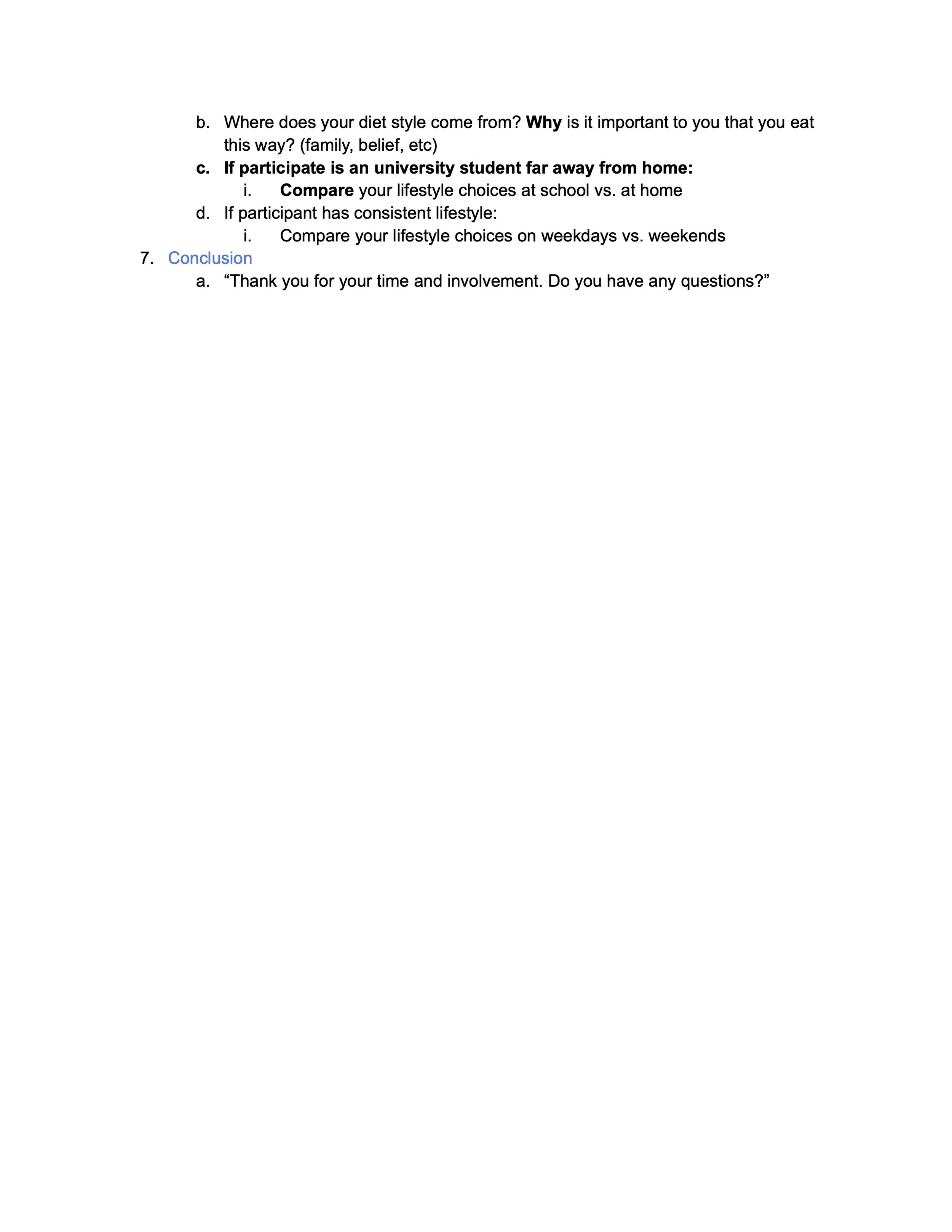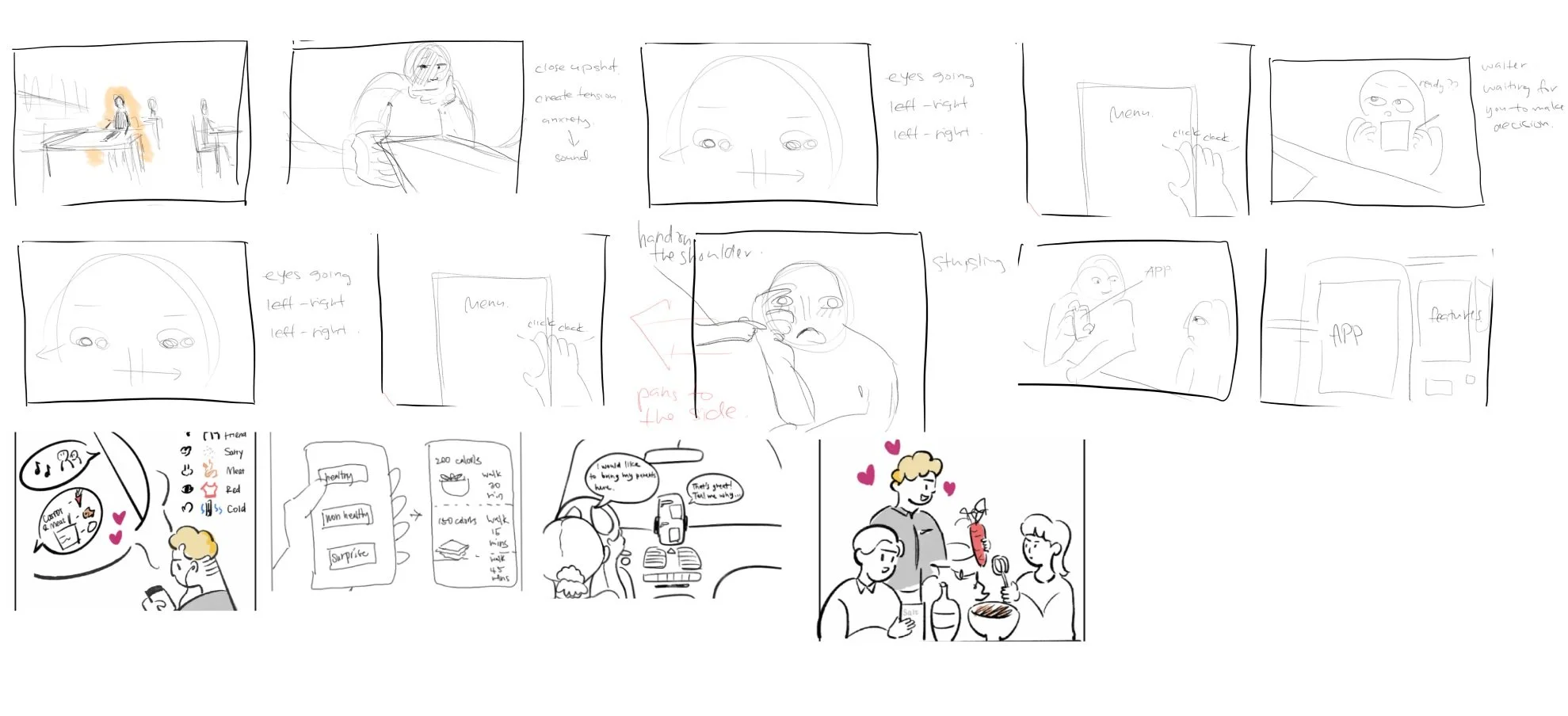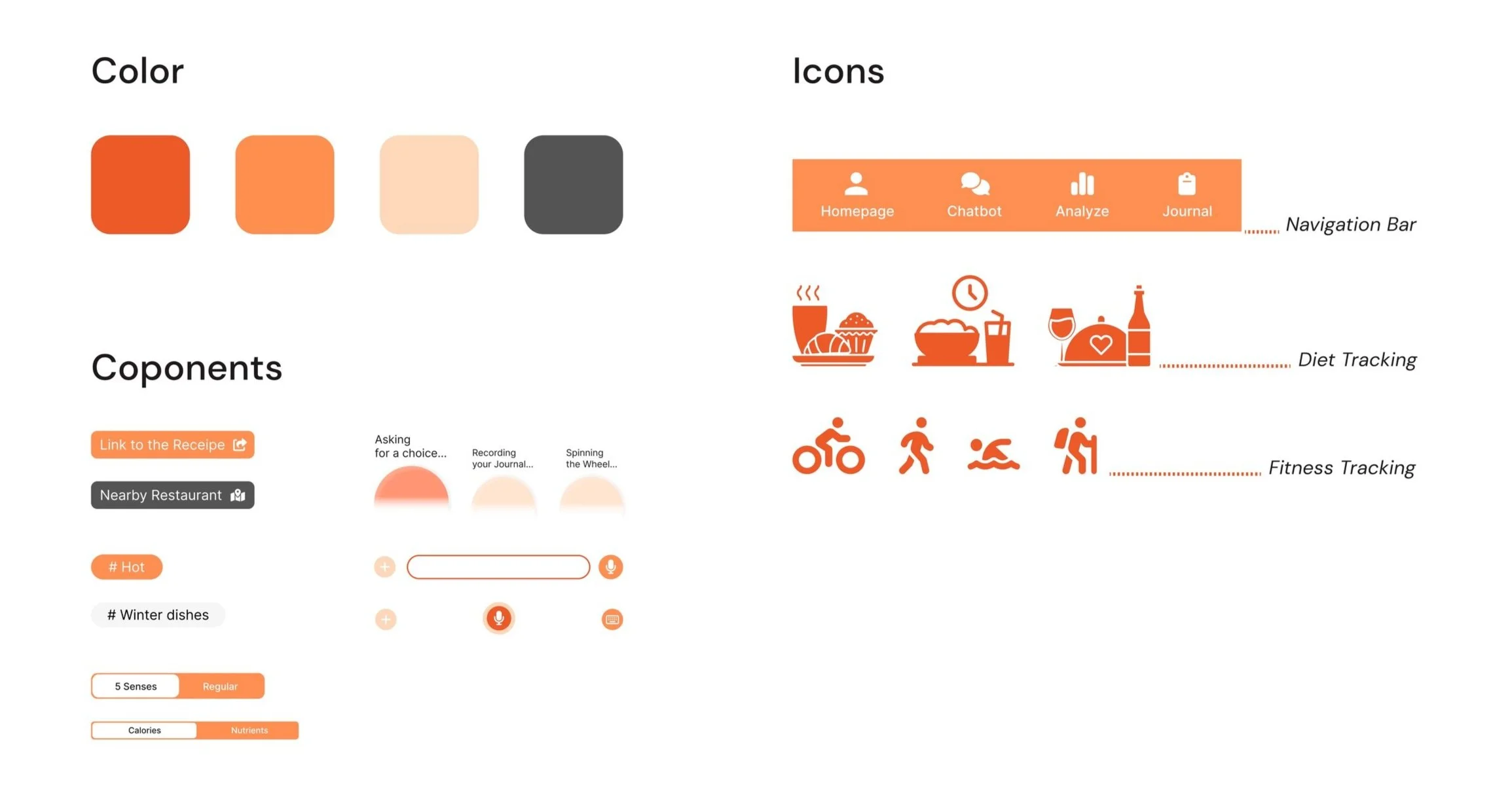Foodie Buddy>>
For a personalized, transparent, and informative assistant that will aid your dining experience.
Team Project with Elly Young and Yimiao Wu
Summary
Conceptualizes an application with a personalized, transparent, and informative chat bot that aids your dining experience.
Timeline
Sep - Dec 2023
Role
Team leader
Research Lead
The Problem
How might we understand the thought process behind dining out in a restaurant in order to personalize and improve the experience for customers?
Research Method
Contextual Research
Our own past experiences or assumptions about visiting a restaurant can create a bias in how we envision the process of ordering food. We must first ask questions like: is our user by themselves? How often do they go to eat out? Who do they go with? What do they feel in a restaurant? We even need to consider how our solution to this presented problem affects eating with other people or if it won't affect it at all.
Interview Goals
Find needs and motivations for ordering food in restaurant
Find habits and behaviors when choosing a menu in the restaurant
Find concerns and preferences exists in the process
How should designers deal with each user’s diet, health, allergies, and customization
Example Questions
Getting Context
[Directed Storytelling] Can you describe a memorable dining experience, whether positive or negative, and what makes it stand out?
Motivation
[Think aloud] Can you walk me through your decision-making process when it comes to choosing a place to dine?
Lifestyle
How would you describe your lifestyle (supplementary pills, prioritize lacking nutrients, etc)?
Diet & Food Choice
How does food itself influence your overall dining experience?
Key Insights
Group vs. Solo Dining
Group preferred interviewees emphasized on social property in restaurant choices and collaborative decision-making on dishes
Individual preferred interviewees emphasized on significance of mood and dishes in crafting a unique personal dining experience, with an inclination towards quick, familiar meals or one-person dining
Diet
Dietary choices driven by ingredient preferences and mood, while dining decisions influenced by geography, faith, and family
Emphasis on healthy eating, focusing on greens, vitamins, and nutritional balance
Preference for restaurants with known ingredient details
Desire vs Effort
Strong interest in healthier and more balanced eating habits among participants, @ Limited time and willingness to personally analyze and manage their diets
Lack of knowledge and interest in diet management
Limited awareness of the importance of a healthy diet
Efficiency
Restaurant choice influenced by factors like efficiency, distance, and location
Desire for quality food at a reasonable cost
Selective about dining locations, avoiding places with a high percentage of inedible dishes
Most of our findings focused more towards people’s interest in their general eating habits. Interviewees were concerned about having healthier and more balanced eating habits, but they do not act on it due to limited time and willingness to personally analyze and manage their diets. They have a general sense that something is not going well but they were not sure how to keep track.
After going through our initial research findings, we decided to redefine our guiding question:
redefined problem
“How should we better understand how and why users decide what they eat and help them make personalized decisions?”
PRODUCT GOAL
We hope to facilitate people in making choices about their diet that are both more personalized and effortless through our upcoming research and solutions. We believe that by doing so, individuals will be more inclined to follow their subconscious preferences, leading to a more enjoyable and satisfying dining experience.
Generative Research
Using our generative research template, we asked participants to log and answer the following questions over the course of a week.
Key Insights
To summarize our findings from the generative study, we can organize our insights into these three sections:
Transparency
Our users place high value on having clear visibility into their data. To meet this need, our solution includes a mechanism for recording and tracking their choices, ensuring they always have the most current information at their fingertips.
Personalization
Our users crave something that's tailored just for them. A generic, one-size-fits-all approach just doesn't cut it. They're looking for a service that aligns perfectly with their individual tastes and preferences.
Supervision
We're embracing a concept of mutual supervision. This means not just offering personalized recommendations, but also continually refining these suggestions based on a deeper understanding of our users' emotional and sensory experiences. We're committed to a two-way dialogue, where we not only provide insights but also actively learn from user feedback and self-documentation to enhance our service.
Using the takeaways from our interviews and generative research, we started to work towards our final product design. We first started by drawing out different storyboards scenarios dealt with different dining experience.
Some parts of the storyboards were incorporated into the final video sketch.
Video Sketch
Design Elements
These are the design elements that constructed our app. The initial model of the app used more toned down cool colors but after feedback we decided that warm color palette would be more fitting for our culinary concept.













